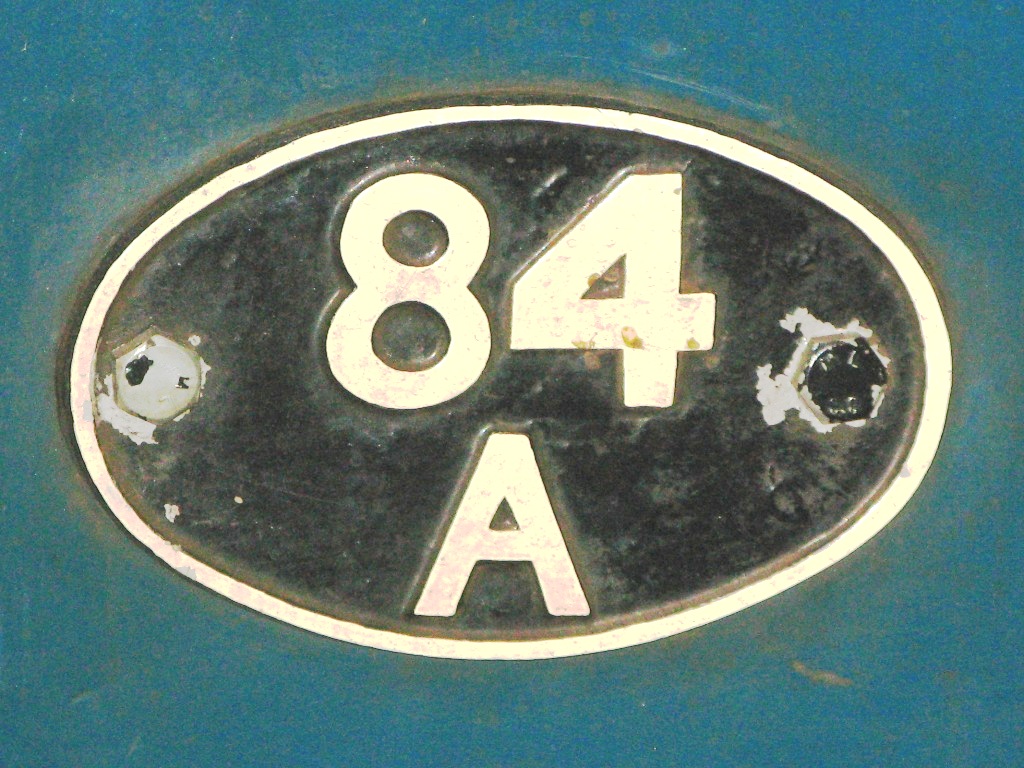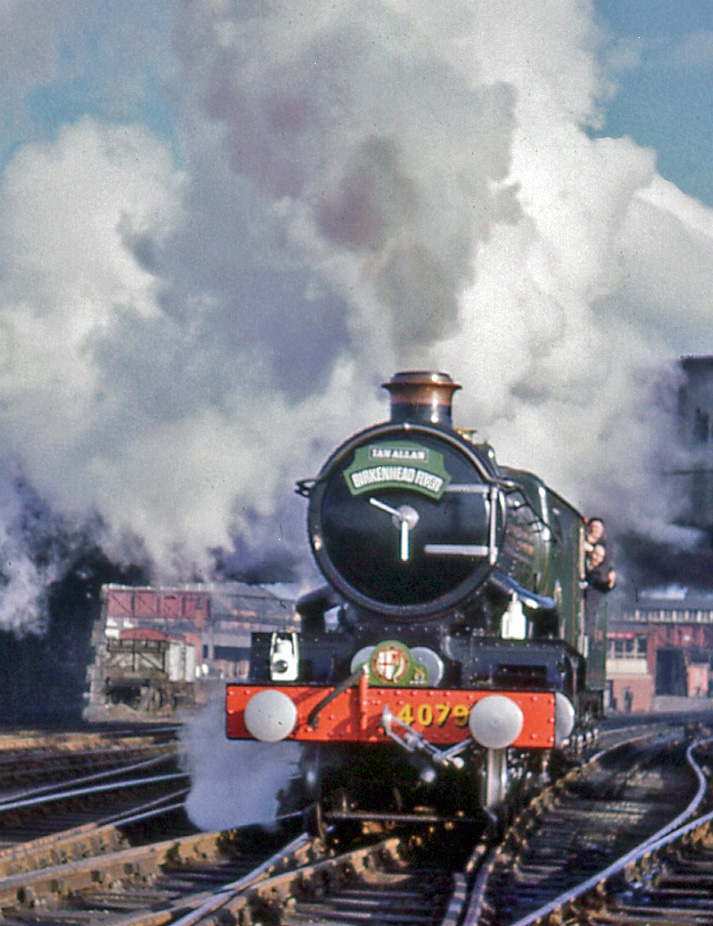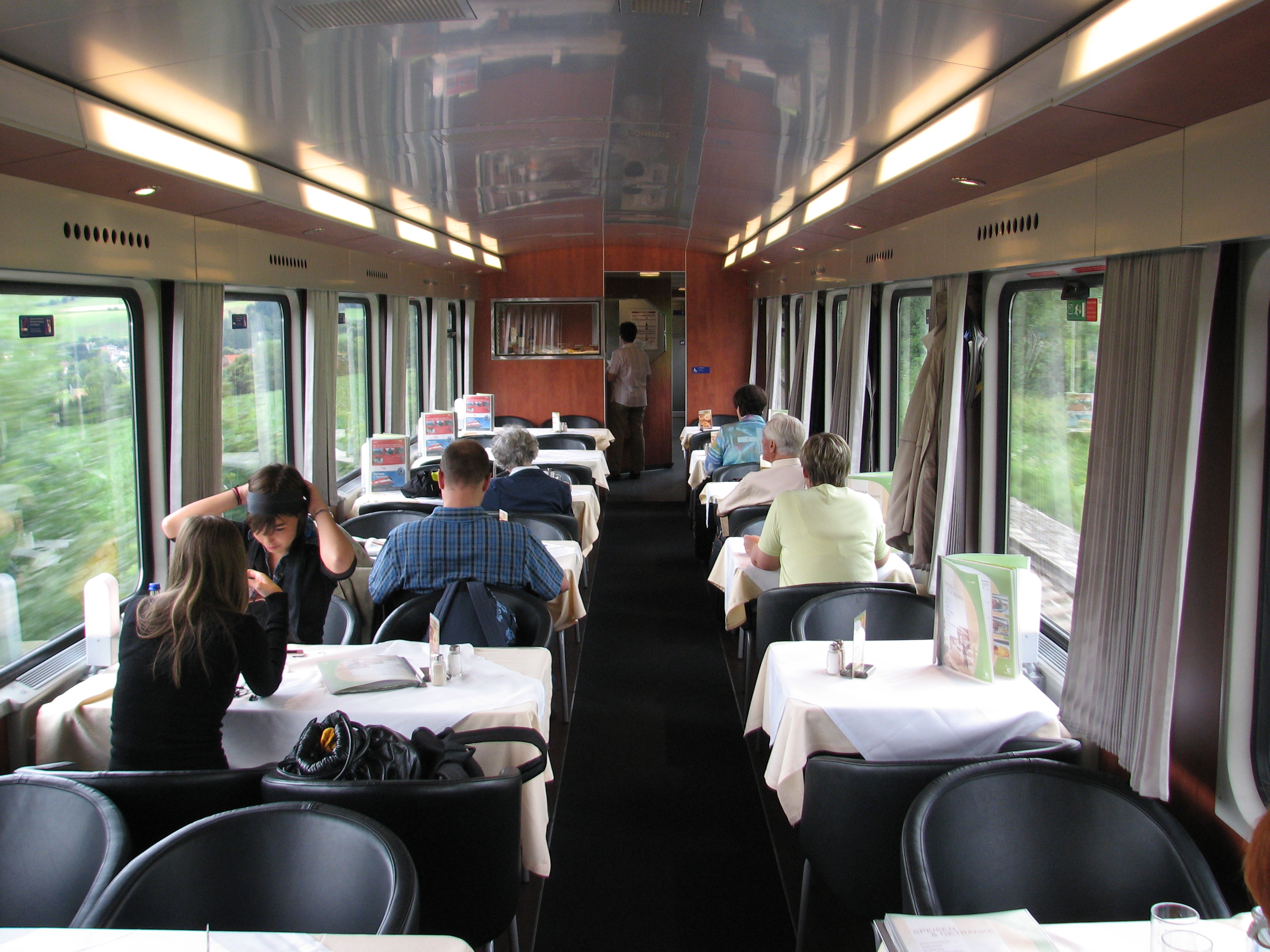|
The Merchant Venturer
''The Merchant Venturer'' was a named train of British Railways. It ran over eleven Summer seasons from 3 May 1951 to 9 September 1961. Together with '' The William Shakespeare'', this began as one of two excursions from London on the Western Region, as part of the Festival of Britain. Both of them ran from London and were intended for a short trip out from the capital, to some of the cultural highlights that were the focuses of the Festival. For ''The Merchant Venturer'' this was to Bristol, Bath or beyond to Weston super Mare. ''The William Shakespeare'' ran to Stratford upon Avon. Both of them used carriages in the new carmine and cream livery of British Railways. Society of Merchant Venturers The Society of Merchant Venturers, originally 'Adventurers', is an organisation in Bristol. It grew from the medieval guild structures and received its Royal Charter in 1552. It has long been associated with maritime trade through Bristol and enforced a monopoly such that only membe ... [...More Info...] [...Related Items...] OR: [Wikipedia] [Google] [Baidu] |
GWR King Class
The Great Western Railway (GWR) 6000 Class or King Class is a class of 4-6-0 steam locomotives designed for express passenger work and introduced in 1927. They were the largest locomotives built by the GWR, apart from the unique Pacific ( ''The Great Bear''). The class was named after kings of the United Kingdom and of England, beginning with the then reigning monarch, King George V, and going back through history. They handled the principal GWR expresses on the main line from London to the West of England and on the Chiltern line to Birmingham and Wolverhampton, until 1962 when the class was withdrawn. Background and development By 1918, it was apparent to the GWR chief mechanical engineer George Jackson Churchward that his Star Class 4-6-0 locomotives would soon be incapable of handling the heaviest West of England expresses without assistance. He therefore proposed fitting the diameter boiler used on his 4700 Class 2-8-0 on to a 4-6-0 chassis, in 1919, to create a more ... [...More Info...] [...Related Items...] OR: [Wikipedia] [Google] [Baidu] |
Great Western Main Line
The Great Western Main Line (GWML) is a main line railway in England that runs westwards from London Paddington to . It connects to other main lines such as those from Reading to Penzance and Swindon to Swansea. Opened in 1841, it was the original route of the first Great Western Railway which was merged into the Western Region of British Railways in 1948. It is now a part of the national rail system managed by Network Rail with the majority of passenger services provided by the current Great Western Railway franchise. The line has recently been electrified along most of its length. The eastern section from Paddington to was electrified in 1998. Work to electrify the remainder of the route started in 2011 with an initial aim to complete the work all the way to Bristol by 2016, but in that year the section through Bath to Bristol Temple Meads was deferred with no date set for completion because costs had tripled. History The line was built by the Great Western Railway ... [...More Info...] [...Related Items...] OR: [Wikipedia] [Google] [Baidu] |
The Bristolian (train)
''The Bristolian'' is a named passenger train service from London Paddington to Bristol Temple Meads. It starts at Weston-super-Mare in the London-bound direction. Inaugurated in 1935 by the Great Western Railway company, the ''Bristolian'' name was retained by British Railways and is still used by its successor, Great Western Railway. Story of the train ''The Bristolian'' was inaugurated in 1935 by the Great Western Railway (GWR) to celebrate the opening of the Great Western Main Line from Paddington to Bristol in 1835, and is notable in that the route taken differed in the up and down directions. The down train (from Paddington) took Brunel's original route via Bath, but the up train (from Bristol) climbed the 1 in 75 of Filton Bank through what is now Bristol Parkway and then continued climbing the 1 in 300 of the Badminton Line to Badminton before rejoining the down route at Wootton Bassett. This meant that the up train had a slightly shorter route of 117.6 miles (compa ... [...More Info...] [...Related Items...] OR: [Wikipedia] [Google] [Baidu] |
Bristol Pullman (train)
''The Bristolian'' is a named passenger train service from London Paddington to Bristol Temple Meads. It starts at Weston-super-Mare in the London-bound direction. Inaugurated in 1935 by the Great Western Railway company, the ''Bristolian'' name was retained by British Railways and is still used by its successor, Great Western Railway. Story of the train ''The Bristolian'' was inaugurated in 1935 by the Great Western Railway (GWR) to celebrate the opening of the Great Western Main Line from Paddington to Bristol in 1835, and is notable in that the route taken differed in the up and down directions. The down train (from Paddington) took Brunel's original route via Bath, but the up train (from Bristol) climbed the 1 in 75 of Filton Bank through what is now Bristol Parkway and then continued climbing the 1 in 300 of the Badminton Line to Badminton before rejoining the down route at Wootton Bassett. This meant that the up train had a slightly shorter route of 117.6 miles (c ... [...More Info...] [...Related Items...] OR: [Wikipedia] [Google] [Baidu] |
Headboard (train)
A headboard is a board hung on the front of a locomotive. Generally it can depict a named train. Headboards are distinct from locomotive nameplates. In the United Kingdom, headboards were common on the public railway in the age of steam and into the age of Diesel and electric trains, although in modern times, use of headboards on scheduled trains is now defunct, although headboards are often still used on the occasion of a "last train", such as the withdrawal of a particular class of locomotive. On the scheduled network, headboards were used to denote special named trains, such as luxury pullmans, blue riband expresses or other once a day special services such as boat trains. Latterly, headboards are still used by railtour companies for rail enthusiast's excursions, to denote the name of a tour, or more generally the name of the organisation running a tour. Headboards are also frequently used on heritage railway line services to denote special trains or events. Common practice ... [...More Info...] [...Related Items...] OR: [Wikipedia] [Google] [Baidu] |
GWR Train Reporting Number
A train reporting number in Great Britain identifies a particular train service. It consists of: * A single-digit number, indicating the class (type) of train, followed by * A letter, indicating the destination area, followed by * A two-digit number, identifying the individual train or indicating the route (the latter generally for suburban services). The train reporting number is often called the headcode, a throwback to when the number was physically displayed at the head of a train. History Headcodes Headcodes were introduced circa 1850 and were shown by oil lamps facing forward on the front of the locomotive. The position of these lamps on the locomotive denoted the class of train, which assisted the signalmen to determine the gaps between trains required in the interval-based signalling system that was used at the time. The lamps were lit at night and were usually painted white to assist with sighting by day. On some lines white discs were used by day in the place of ... [...More Info...] [...Related Items...] OR: [Wikipedia] [Google] [Baidu] |
BR Class 42
The British Rail Class 42 ''Warship'' diesel-hydraulic locomotives were introduced in 1958. It was apparent at that time that the largest centre of expertise on diesel-hydraulic locomotives was in West Germany. The Western Region of British Railways negotiated a licence with German manufacturers to scale down the German Federal Railway's "V200" design to suit the smaller loading gauge of the British network, and to allow British manufacturers to construct the new locomotives. The resultant design bears a close resemblance, both cosmetically and in the engineering employed, to the original V200 design. Warship locomotives were divided into two batches: those built at BR's Swindon works were numbered in the series D800-D832 and D866-D870, had a maximum tractive effort of and eventually became British Rail Class 42. 33 others, D833–D865, were constructed by the North British Locomotive Company and became British Rail Class 43. They were allocated to Bristol Bath Road, Pl ... [...More Info...] [...Related Items...] OR: [Wikipedia] [Google] [Baidu] |
British Rail 18100
British Rail 18100 was a prototype main line gas turbine-electric locomotive built for British Railways in 1951 by Metropolitan-Vickers, Manchester. It had, however, been ordered by the Great Western Railway in the 1940s, but construction was delayed due to World War II. It spent its working life on the Western Region of British Railways, operating express passenger services from Paddington station, London. Overview It was of Co-Co wheel arrangement and its gas turbine was rated at . It had a maximum speed of and weighed . It was painted in BR black livery, with a silver stripe around the middle of the body and silver numbers. Technical details The gas turbine was of a type which would now be called a turboshaft engine but it differed from modern free-turbine turboshaft engines in having only one turbine to drive both the compressor and the output shaft. It was based on aircraft practice and had six horizontal combustion chambers (spaced radially around the turbine shaft) and ... [...More Info...] [...Related Items...] OR: [Wikipedia] [Google] [Baidu] |
Shed Code
British Railways shed codes were used to identify the motive power depot, engine sheds that its locomotives and multiple units were allocated to for maintenance purposes. The former London, Midland and Scottish Railway (LMS) alpha-numeric system was extended to cover all regions and used until replaced by alphabetic codes in 1973. System of codes The coding system had its origins in a reorganisation of locomotive operation and maintenance on the LMS in the 1933-35 period. It grouped all sheds into districts with a main shed, given the district number followed by the letter A as its code, and subsidiary sheds with the same number followed by B, C, or D etc. Many sheds were also responsible for sub-sheds where day-to-day servicing could be carried out but which lacked the facilities for intermediate or heavy overhauls. The extension of the system to all regions was brought into use in 1950, each region being given a block of district numbers: * 1 – 28 London Midland Region of Briti ... [...More Info...] [...Related Items...] OR: [Wikipedia] [Google] [Baidu] |
Old Oak Common TMD
Old Oak Common TMD was a traction maintenance depot located west of Paddington railway station, London Paddington, in Old Oak Common. The depot was the main facility for the storage and servicing of locomotives and multiple-units from Paddington railway station, Paddington. The depot codes were OC for the diesel depot and OO for the carriage shed. In steam days the List of British Railways shed codes, shed code was 81A. The area is also where two Great Western Railway main lines divide: the 1838 route to via , and the 1906 "New North Main Line" (present-day Acton–Northolt line) via to South Ruislip station, Northolt Junction, the start of the Great Western and Great Central Joint Railway line. The former is in use for regular passenger services; the latter is used overwhelmingly by freight trains and empty coaching stock movements. The 'HST' section of Old Oak Common TMD, more commonly known as 'Old Oak Common HST Depot' closed in 2018 with the removal of the InterCity 125s ... [...More Info...] [...Related Items...] OR: [Wikipedia] [Google] [Baidu] |
GWR Castle Class
The 4073 or Castle Class are 4-6-0 steam locomotives of the Great Western Railway, built between 1923 and 1950. They were designed by the railway's Chief Mechanical Engineer, Charles Collett, for working the company's express passenger trains. They could reach speeds of up to . Background The origins of this highly successful design date back to the Star Class of 1907 which introduced the basic 4-cylinder 4-6-0 layout with long-travel valves and Belpaire firebox that was to become characteristic of Great Western Railway (GWR) express passenger locomotives. The Star class was designed to take the top express trains on the GWR, with 61 in service by 1914, but after World War I there was a need for an improved design. To meet this need, Chief Mechanical Engineer George Churchward had in mind an enlarged Star class design with a standard No.7 boiler, as fitted to his GWR 4700 Class express freight 2-8-0. However, this combination would have taken the axle load over the 20-ton limit ... [...More Info...] [...Related Items...] OR: [Wikipedia] [Google] [Baidu] |
Restaurant Car
A dining car (American English) or a restaurant car (British English), also a diner, is a railroad passenger car that serves meals in the manner of a full-service, sit-down restaurant. It is distinct from other railroad food service cars that do not duplicate the full-service restaurant experience, such as buffet cars, cars in which one purchases food from a walk-up counter to be consumed either within the car or elsewhere in the train. Grill cars, in which customers sit on stools at a counter and purchase and consume food cooked on a grill behind the counter are generally considered to be an "intermediate" type of dining car. History United States Before dining cars in passenger trains were common in the United States, a rail passenger's option for meal service in transit was to patronize one of the roadhouses often located near the railroad's " water stops". Fare typically consisted of rancid meat, cold beans, and old coffee. Such poor conditions discouraged many from makin ... [...More Info...] [...Related Items...] OR: [Wikipedia] [Google] [Baidu] |










